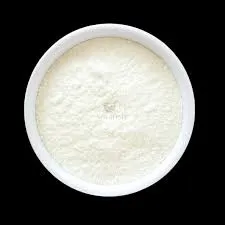
Dec . 12, 2024 09:31 Back to list
methyl hydroxyethyl cellulose price
The Price Dynamics of Methyl Hydroxyethyl Cellulose An In-Depth Analysis
Methyl Hydroxyethyl Cellulose (MHEC) is a non-ionic cellulose ether commonly used in various industries, including construction, pharmaceuticals, food processing, and cosmetics. Its unique properties, such as water retention, thickening ability, and film-forming characteristics, make it an essential ingredient in many products. However, understanding the pricing dynamics of MHEC can offer valuable insights into industry trends, economic conditions, and market demands.
Factors Influencing MHEC Pricing
1. Raw Material Costs The primary cost driver for MHEC is the price of its raw materials. Cellulose, the base component, is derived from wood pulp, cotton, or other plant sources. Fluctuations in the prices of these raw materials due to demand-supply imbalances, trade policies, or changes in forestry practices can significantly impact MHEC pricing. Additionally, the costs of chemicals used in the etherification process also play a crucial role in determining the final price.
2. Production Process The manufacturing process of MHEC is complex and energy-intensive. Any changes in energy costs, including electricity, fuel, and water, can lead to variations in production costs. Moreover, technological advancements that enhance efficiency or reduce waste could influence pricing strategies in the market.
3. Market Demand and Supply The demand for MHEC has been growing as industries seek sustainable and efficient alternatives to traditional materials. The construction sector, in particular, has seen a surge in demand due to increased infrastructure projects. However, supply chain disruptions, such as those experienced during the COVID-19 pandemic, can lead to shortages, pushing prices higher. Conversely, an oversupply situation can lead to price reductions as manufacturers compete for market share.
4. Geopolitical Factors Global events and geopolitical tensions can also affect the pricing of MHEC. Trade restrictions or tariffs imposed by governments can increase the cost of importing raw materials or exporting finished products. For instance, if a major supplier of cellulose imposes tariffs or faces production challenges, it can create a ripple effect throughout the MHEC supply chain.
methyl hydroxyethyl cellulose price

5. Regulatory Environment The regulatory landscape surrounding chemical products can have significant implications for pricing. Strict environmental regulations may necessitate investments in cleaner technologies or processes, potentially leading to increased production costs. Companies that comply with stringent safety and environmental standards may pass these costs onto consumers, affecting overall pricing.
Regional Variations in MHEC Pricing
Pricing for MHEC can vary across different regions due to variations in local production capabilities, raw material availability, and regulatory requirements. For instance, regions with abundant forestry and cellulose supply may experience lower prices, whereas areas relying on imports may see elevated costs. Moreover, fluctuating currency exchange rates can impact international pricing, making it vital for businesses to stay informed about global economic trends.
Future Outlook
Looking ahead, the price of Methyl Hydroxyethyl Cellulose is expected to remain dynamic. As industries continue to innovate and adapt to changing consumer demands, the formulations and applications of MHEC will likely evolve. Furthermore, the push for sustainability may drive demand for eco-friendly alternatives and biobased materials, potentially affecting MHEC's price trajectory.
In conclusion, understanding the pricing of Methyl Hydroxyethyl Cellulose requires a comprehensive analysis of various interrelated factors. From raw material costs to geopolitical influences, the price dynamics of MHEC reflect broader market trends and economic conditions. For businesses relying on MHEC, staying informed about these factors is crucial for strategic planning and maintaining a competitive edge in this evolving market.
-
Why HPMC is a Key Additive in Wall Putty Formulations
NewsAug.05,2025
-
Redispersible Powder in Decorative Renders: Function Meets Finish
NewsAug.05,2025
-
Redispersible Powder for Interior Wall Putty: Smooth Results Every Time
NewsAug.05,2025
-
HPMC’s Water Retention Capacity in Dry Mortar Applications
NewsAug.05,2025
-
HPMC Factory Contributions to Liquid Detergents
NewsAug.05,2025
-
How HPMC Factory Products Change Detergent Textures
NewsAug.05,2025







